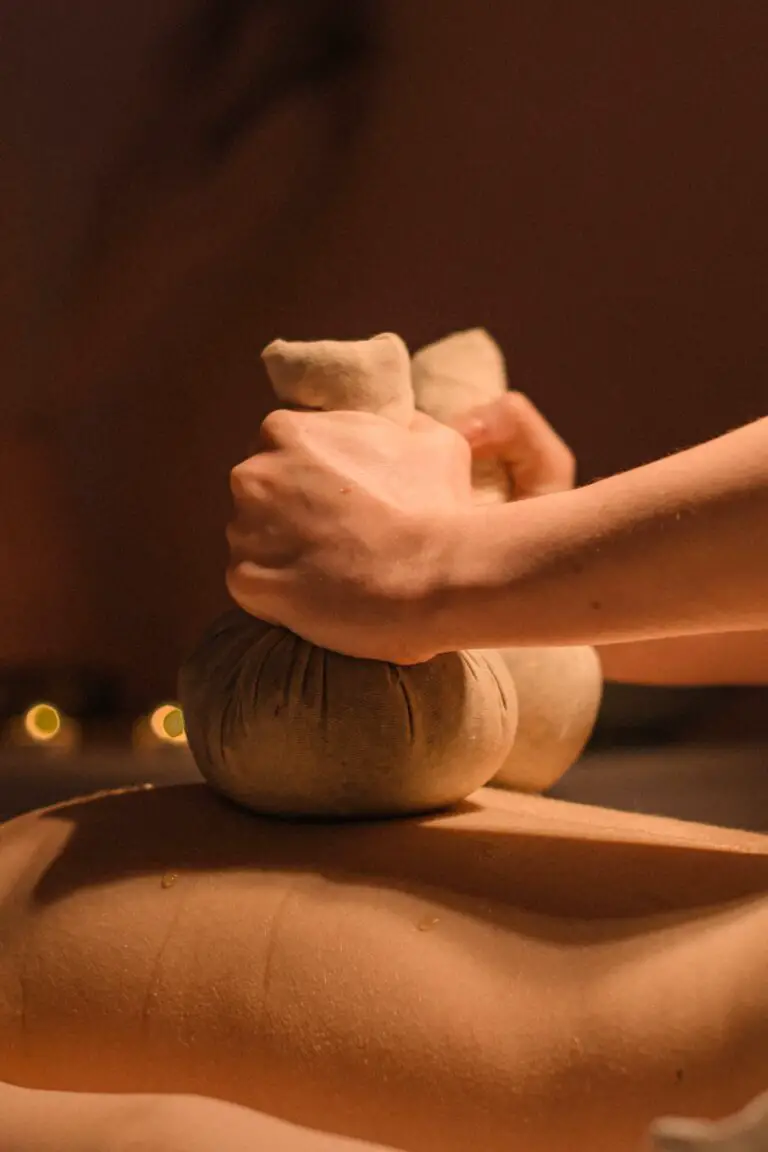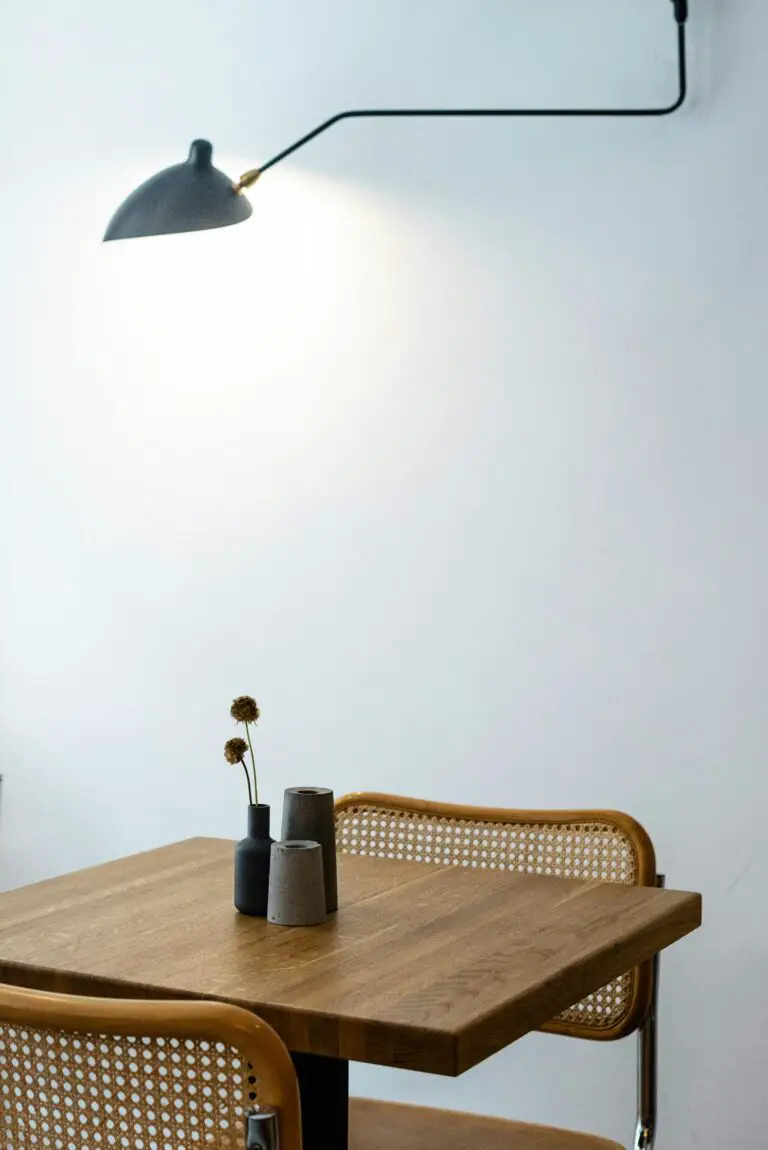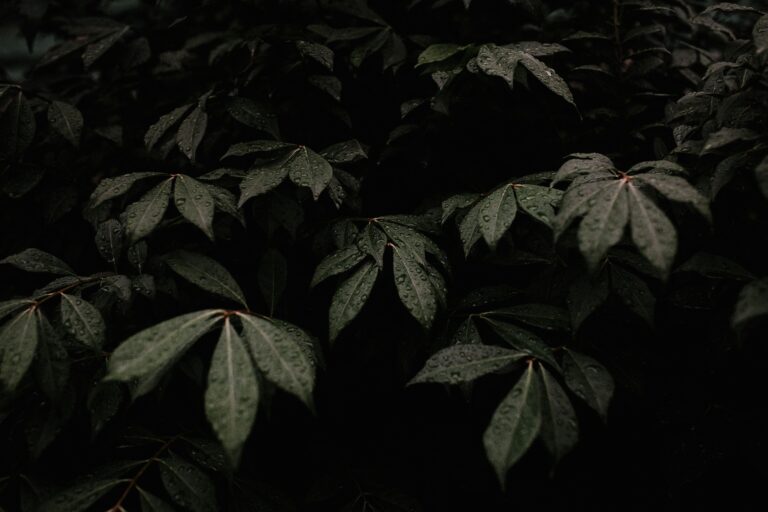Introduction to Sedum and Pruning Basics
Welcome to the verdant world of sedums, where these hardy succulents charm gardeners with their versatility and vibrant foliage. If you’ve strolled through gardens or browsed gardening forums, you’ve likely encountered debates on the “right way” to tend to these little green wonders. Today, we’re unraveling the mystery: should sedum be pinched back? Let’s dive into the art and science of pruning, specifically tailored for the robust sedum.
Imagine pruning like a strategic game of chess; each move determines your plant’s trajectory towards lush growth or lackluster performance. Sedums, with their easy-going nature, actually thrive with a little TLC in the form of pinching back. This method doesn’t just keep your sedums in shape—it’s akin to a personal training session for your plants, encouraging them to develop denser, bushier, and more floriferous habits. Think of it as encouraging your sedums to reach their full potential!
But what’s the real deal with pinching? It all boils down to directing the plant’s energy. When you pinch back the early growth, the sedum gets a signal to redirect its resources. This leads to multiple offshoots, which in garden lingo, means more growth points for that coveted full look. It’s a strategic move known among seasoned gardeners—it’s like whispering a secret to your sedums that says: “Hey, let’s get lush!”
Take ‘Autumn Joy,’ for example, a popular sedum variety that can become floppy without a timely pinch. Gardeners have discovered that a quick snip in the spring can mean the difference between a sedum that slouches and one that stands tall, bursting with vivid blooms when fall rolls around. The transformation is nothing short of spectacular, akin to watching a botanical ballet where every plant is perfectly poised.
For visual learners and those wanting to see this transformation in action, we’ve got you covered. Explore some of the best practices in the video below, offering insights into pruning sedum for optimal results.
As we dive deeper into sedum care, there’s a treasure trove of tips and tidbits on how to get the most out of these perennial favorites. Whether it’s the perfect time to prune back your sedums or unveiling the secrets behind their succulent success, you’ll find every nugget of wisdom to turn your garden into a sedum showcase. For further reading, take a peek at our comprehensive guide on Sedum Pruning Secrets: Enhance Your Garden’s Charm and transform your green space into the envy of every plant enthusiast on the block.
So, as you consider the question of pinching back your sedums, remember that with each small gesture—a gentle pinch here, a strategic snip there—you’re sculpting a living masterpiece. And in the end, each of your sedums, like strokes of a brush on a canvas, contributes to the vibrant mosaic of your garden masterpiece.
Understanding Sedum Varieties
When you dive into the world of sedums, you’ll soon realize that these succulent beauties come in an astonishing variety that can leave even the most experienced gardeners in awe. Sedums, with their diverse colors, shapes, and growth habits, fill our gardens with year-round interest and are sometimes puzzling when it comes to their care requirements. Expert gardeners agree that understanding the traits of each species is the key to unlocking their full potential.
Take, for example, the low-growing Sedum spurium, which stealthily creeps along rockeries adding a lush carpet of foliage, while its taller cousin, Sedum telephium, stands proudly in perennial borders with its candy-colored umbels. For the ‘Autumn Joy’ variety, pinching back in late spring can promote a bushier form teeming with blooms, reminiscent of my neighbor’s garden, which becomes a hotspot for butterflies each year.

Despite their hardy nature, some sedum species might need a bit of help to achieve that coveted lush appearance. This is where pruning comes into play. With a watchful eye and timely intervention, the gardener can encourage plants to become fuller and more robust. In case you’re feeling hesitant, remember that sedums are quite forgiving – a quick snip here and there, and they’ll bounce back with vigor, as I learned firsthand after rejuvenating an overgrown patch in my backyard.
It’s fascinating to see how these resilient plants respond to the gardener’s touch. Whether it’s the strategic pinching for more luxurious growth or the careful removal of spent blooms to focus the plant’s energy, the difference in your sedums before and after such attention can be startling. For more insights on keeping your garden in prime condition, check out these maintenance tips that are essential to any plant lover’s repertoire.
The Benefits of Pinching Back Sedum
When we talk about getting “hands-on” in the garden, we’re often referring to the gratifying practice of pinching back plants to promote health and vigor. With sedum, a popular succulent, this simple gesture of care can yield a bounty of benefits. Imagine your sedum plants as a crowd of eager concert-goers, all pushing towards the stage. Without a little management, the group can get out of hand. But with a thoughtful pinch here and there, we can ensure everyone has space to thrive and bloom spectacularly.
Promoting Fuller Growth: Just like a skilled hairdresser can encourage a fuller head of hair with a few strategic snips, pinching back sedum can prompt it to push out fresh, bushy growth. Imagine a sedum that’s more like a lush green bouquet than a single stem – that’s the magic of a little pinch!
Preventing Legginess: Sedum has a tendency to get a bit, well, leggy – think of a plant stretching out for the sun, getting taller but also sparser. It’s not the dense, compact look we gardeners covet. By pinching back, we’re essentially telling the plant to “hold your horses” and grow in a more controlled, aesthetically pleasing manner.
Encouraging More Blooms: More growth points typically mean more flowers. By pinching, you could be hosting a summer-long sedum soiree with an abundance of blooms. It’s a simple trick that can lead to an extended season of color and life in your garden’s succulent section.

Intrigued about how to extend these benefits to your own garden? Head over to Gardening Know How for a deep dive into the proper techniques for pruning your sedum plants.
For those looking to enhance their garden’s charm with these pruning practices, peek at our in-depth guide on Sedum Pruning Secrets: Enhance Your Garden’s Charm. Here, we elaborate on the art of sedum upkeep, ensuring your garden remains a verdant sanctuary.
When to Pinch Back Your Sedum
Let’s chat about timing—when should you start tweaking, twisting, and tidying up your sedum plants? Timing is everything, and it can mean the difference between a flourishing sedum spectacle and a less-than-lush garden guest. Listen up, because we’re about to dig into the perfect window of opportunity for pinching back these succulent beauties.
Imagine it’s early spring, and your sedum plants are just starting to shake off the chill of winter. As they begin stretching their sturdy stems toward the sun, that’s your cue. Pinching back should generally happen in late spring when the growth is young and supple—usually around 4 to 6 inches tall. It’s the sweet spot for encouraging a sturdy, bushy plant that will stand strong rather than flop over in despair when it starts to bloom. Always remember, though, sedum plants are as individual as snowflakes, so observe your plant’s growth habits and adjust the timing accordingly.
Think of your sedum like a young apprentice—you’re guiding it, encouraging branching and fullness without stifling its spirit. Trimming too late is like giving a pep talk after the game; the energy’s just not there. On the flip side, pinching too early can be equally perplexing for the plant. Keep it right, keep it tight, and you’ll have sedum that’s out of sight!
Here’s a real slice of life for you: my neighbor, Martha, swore by the “pinch ’em by June” policy. By midsummer, her sedums were the talk of the town—stout, sprawling, and blossoming like a fireworks display. It’s all about consistent timing and a gentle touch, like Martha’s masterful pinches.
To visualize how to pinch back your sedum, watch this helpful video that showcases the technique:
Remember, don’t get snippy with it, get savvy. A well-timed pinch here and there ensures your sedums stay show-worthy all season long. And when the fruits of your labor blossom into a robust and radiant sedum masterpiece, you’ll be glad you took the time to get it just right.
How to Properly Pinch Back Sedum
Are you eyeing that sedum in your garden, wondering if a little snip here and there will lead to a more vibrant display of succulent glory? Well, plant enthusiast, you’re on the right track. Pinching back sedum can encourage a bushier growth and prevent the infamous midsummer slump where taller varieties tend to splay open like a poorly constructed umbrella. Let’s roll up our sleeves and dive into the nitty-gritty of this simple but transformative gardening technique!
Firstly, timing is everything when it comes to pruning sedum. Aim for the sweet spot which is usually late spring or early summer, right before the growth spurt. Imagine being an artist about to sculpt a masterpiece — that’s you, defining the future contours of your sedum.
Now, it’s as easy as playing ‘just the tip’ with your plants. Using your thumb and forefinger, pinch about one-third to half of the succulent’s stem tip. Picture yourself as a tiny hairdresser giving your green friends a trendy haircut. Only here, you’re not just going for style but promoting a bushier, more handsome sedum that can stand tall without drooping.
Here’s where it gets extra crafty. If your sedum has side buds, pinching back can be a strategic move to shift the plant’s energy to these buds. This will result in a lusher appearance, and who doesn’t love a fuller plant? It’s like opting for more volume in your hair for that picture-perfect look!
There’s a visual guide for those who are thinking, ‘I need to see this in action!’ Below is an image showing you the exact point where you should pinch your sedum. It’s like that moment when you’re about to click the perfect selfie — precision is key.

Aftercare is pretty straightforward. Make sure your sedum is kept well-hydrated after pinching — treat it like it just ran a marathon and needs to replenish. In a few weeks, you’ll see the payoff, with your sedum sprouting new growth that’s ready to take on the world or at least the local garden show.
To sum it up, consider pinching back your sedum as a mini garden intervention. It’s a way to guide your plants towards their fullest potential. Before long, your neighbors will be peeking over the fence, wondering how you got your garden to look like a lush paradise. And when they ask, just wink and say it’s all in the pinch!
Post-Pinching Care: What to Expect and Do Next
After you’ve given your sedums a little “haircut,” it’s natural to wonder what comes next. Just like a moment of awe as you admire a friend’s lush hair post-trim, you’ll notice a transformation in your sedum. The pinched areas will soon become hubs for new growth—expect to see a bunching effect where multiple shoots emerge from the cut. This is your sedum’s way of saying “thank you” by becoming fuller and even more vibrant.

Have you ever pinched back a sedum and then stood back, hands on hips, wondering if you’ve just ruined your plant? Fear not! Within weeks, instead of sparse, elongated stems, you’ll witness a burst of compact foliage and perhaps a promise of blooms to come. As verdant points push through the soil, forming a lush, green tapestry, you’ll feel like a gardening maestro orchestrating a symphony of growth.
Maintaining Your Newly Pinched Sedum
Now, don’t just abandon your sedum to the whims of Mother Nature. Your role in this botanical drama is ongoing. Keep an eye out for dry spells—sedums are drought-tolerant but do enjoy a drink during extended periods without rain. When watering, think of it as quenching a subtle thirst, not drowning the sorrows of your green friend. Too much water can lead to root rot, so let the soil dry out between watering sessions.
Think about sedum care like a balancing act in a comedy show—too much of one thing and it’ll flop, but just enough and you’re in for a hit. If you notice your plants getting a bit too ambitious with their growth, feel free to give them another pinch. This isn’t a sitcom rerun; your sedum can enjoy multiple pinching sessions throughout the growing season to maintain its desirable shape and size.
Your sedum doesn’t need a constant stream of nutrients either. Treat it to a balanced, slow-release fertilizer in the spring, which is like providing a stage for a stand-up comedian—it won’t steal the show, but it’ll set the stage for a fantastic performance. Then, let your sedum take the spotlight and do its thing. Avoid overfeeding as excessive nutrients can actually deter flowering, leaving you with all foliage and no show.
As the season progresses, watch your sedum for signs of happiness or distress, just like an audience’s reaction during a play. Heed its cues, and you’ll be rewarded with a robust, lively plant that’s the envy of fellow gardeners—akin to thunderous applause after a brilliant act. Post-pinching care is as simple as that—steady support, a little love, and knowing when to take a bow. Your sedum will thrive, putting on a delightful display that lasts long into the growing season.
Common Mistakes to Avoid While Pinching Back Sedum
When it comes to keeping your Sedum perky and lush, pinching back is the secret handshake between you and your garden. But, let’s face it, even with the best of intentions, gardeners can sometimes stumble in their green-thumb endeavors. To prevent you from going down a garden path strewn with rookie errors, we’re spilling the dirt on the do-not-dos of pinching back this plump-leaved beauty.
Timing is Everything
One blunder to steer clear of is improper timing. Pinch back your Sedum too early, and you might as well roll out a red carpet for pests and diseases. Wait too long, and you may as well wave goodbye to those potentially full, hearty clusters. Aim for the Goldilocks zone – not too early, not too late, just right. Picture this: it’s early spring, and your Sedums are reaching for the sky. That’s your cue to think “snip-snip” for a happy, fuller plant down the line.
Using the Wrong Tools
Ever witnessed someone trying to pinch back Sedum with rusty, ragged scissors? It’s like watching a bad haircut in slow motion. Always use sharp, clean shears. A clean cut not only keeps things looking tidy, but it also helps the plant heal faster, putting less stress on your lush Sedums.
Overzealous Pinching
Too much of a good thing? Absolutely, when it comes to pinching back. Some enthusiasts treat their Sedum like it’s the last dance at prom, pinching with wild abandon. Sedums are hardy, but they’re not invincible. Moderation is key – promote growth without stripping the plant bare.
For a closer look at how it’s done right, check out this video:
${‘‘}
Imbalance can be the downfall of your Sedum’s charm. You want to encourage bushy, robust growth without tipping over into the realm of the untamed jungle. Remember, pinching back should sedum be done to enhance, not to compete with its naturally mounded grace.
Ignoring the Plant’s Health
Last but not least, turning a blind eye to the health of your Sedum before pinching is akin to asking your grandma to run a marathon without checking if she’s up for it. A stressed plant is not a good candidate for pruning. If your Sedum has been duking it out with diseases or drought, let it recover first. Pinching a struggling Sedum is like kicking it while it’s down – not very sportsmanlike, eh?
With these insights tucked into your gardening apron, you’re well on your way to cultivating Sedum that draws envy from fellow green-thumbs and joy to your outdoor oasis. Happy planting!
Complementary Care Tips for Thriving Sedum
While pinching back your sedum is a surefire way to encourage bushier growth and more blooms, it’s not the only trick in the gardeners’ book to ensure your plants are living their best life. Couple pinching back with a solid care regimen, and you’re on your way to becoming a sedum superstar!
Watering Wisdom
Imagine this: it’s a scorching summer day, and all you want is a cool glass of water – not too much, just enough. That’s exactly how sedum feels about moisture. These succulent beauties prefer a ‘less is more’ approach, thriving on neglect rather than over-care. Give them a good soaking, and then let the soil dry out completely before watering again. It’s like playing hard to get with your garden hose, and your sedums will love you for it!
Sunlight: Sedum’s Solar Panels
Sedums are like those friends who love a good beach day; they just can’t get enough of the sun. Full sunlight is the ticket to their happiness, ensuring they grow thick and full. And just like us slathering on sunscreen, sedums rely on their leaf wax to keep them from sunburn. Isn’t nature clever? So park them in a spot where they can bask in the glory of the sun for at least six hours a day, and watch them soak up those rays with glee.
Soil: A Strong Foundation
Think of soil like a sedum’s pair of comfy shoes; it needs to fit just right. A mix that’s light, airy, and well-draining will have your sedum throwing a garden party. Why? Because while they adore a splash of water, they hate soggy feet. An ideal mix would be one part potting soil to one part gravel or sand. This creates a fast-draining environment where roots can breathe easy, preventing root rot and other soggy scenarios.
And now, let’s dive into a visual treat with a video that captures the essence of sedum care. This clip will arm you with essential insights to level up your sedum game, giving you the green thumb you’ve always desired.
The essence of sedum care is simple: be mindful of needs and they’ll reward you with lush, vibrant growth. Whether you’re a seasoned gardener or a newbie with a newfound green thumb, understanding the delicate balance of watering, lighting, and the right soil mix is key to cultivating thriving sedum plants. So, put these tips into practice and prepare to pinch back for prosperity!
Frequently Asked Questions
When it comes to getting that lush, full look in your garden, understanding whether should sedum be pinched back is key. Gardeners across the board might question this approach, but let’s dig into the gritty and enlightening world of sedum care with some of the most common questions answered!
What does ‘pinching back’ a sedum actually mean?
Imagine this: you’re eyeing up the growth of your sedum plant, and it’s reaching skyward with the eagerness of a sunflower in the peak of summer. ‘Pinching back’ is a technique where you quite literally pinch off the growing tips of your plant. This doesn’t mean you’re hindering its dreams of touching the clouds, but rather, you’re encouraging it to become fuller and spread outwards, creating a lavish, envy-worthy mat of greenery.
When is the best time to pinch back my sedum?
Timing is everything! Like catching the perfect sunrise, pinching back your sedum should be done in the spring, as new growth appears and before the sedum says ‘hello’ to the midsummer’s height. Doing it during this early stage helps your plant focus on developing a sturdier, more robust base that can handle a bounty of flowers without flopping over as if it’s taken a lazy day nap in the sun.

Is there a risk of damaging my sedum when pinching it back?
Just like a well-intentioned haircut can land us in a week of wearing hats, pinching back your sedum carries a slight risk if not done properly. Be gentle and use your fingers to remove just the tips, leaving a decent amount of stem behind. Think of it as giving your plant a guiding hand rather than a full makeover. Vigorously pinched sedum might get stressed out, and nobody wants a stressed-out sedum!
Can all varieties of sedum be pinched back for better growth?
While most sedum species will throw a party in response to pinching back, not all sedums are created equal. The low-growing, ground-hugging types might not appreciate the gesture. It’s important to know your variety. For example, the tall, upright ‘Autumn Joy’ can truly rejoice after pinching, while the stonecrop sedums prefer a hands-off approach. It’s like understanding your friends—some love a good hug, others just need a friendly nod.
Will pinching back sedum encourage more flowers?
Absolutely! Just as you might feel more outgoing with a fresh new look, sedum plants feel the same. Pinching back encourages the sedum to branch out, leading to more stems, and consequently, more clusters of starry flowers gracing your garden. It’s as if your sedum is throwing a party and inviting a plethora of vibrant blooms to join in on the fun. So, the short answer is yes, pinch back for more flowers – it’s truly a win-win for you and your beloved sedums.
Do I need special tools to pinch back my sedum?
Special tools? Not at all! Nature has given you all you need—the dexterous wonders found at the ends of your arms. Your fingers are the perfect instruments for pinching back sedum. As long as your hands are clean to prevent spreading pests or diseases, you’re good to go! Sometimes, the most natural approach is the best one, and in the case of pinching sedum, it’s as simple as a gentle squeeze between thumb and forefinger, just like you’d do when you’re trying to resist popping bubble wrap!



